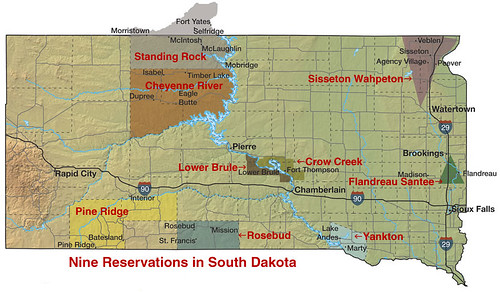With South Carolina CD5 and Georgia CD6 in the books, many Democratic party members and commenters and pundits are advancing their own hot takes of what went right and wrong in these races. The DCCC is to blame. The candidate is to blame. Democratic members will never win again. All hope is lost. Hope is here and fantastic! We are on the verge of a landslide in 2018, etc.
While we sort through the results on the ground, I want to put into perspective what is really happening with our party, not just in Georgia 6 and South Carolina 5, but nationwide. For the last few months, I’ve spent most of my time either on an airplane, in a state meeting, meeting with candidates or visiting states as the look toward the future.
It’s time to talk about what that kind of future looks like. If you want a written piece full of hot takes about those two races — well, I’m going to spend far more time knocking down hot takes I find particularly wrong.
The story of where our party is going, however, is one full of hope and promise, especially today, rather than sour lemons.
Have you ever wondered what state parties are doing to try and help improve their state? In the photo that headlines this dairy, the South Dakota Democratic Party is doing something special. Thanks to a grant program through the DNC, the South Dakota Democratic Party hired extra organizers in an off year to go to Native American communities and help get those voters registered. The party, which is advertising jobs here: www.sddp.org, is leading an initiative every day this summer to improve the life of their residents.
Attending the South Dakota Democratic Party state meeting, there was clearly energy. Sam Parkinson, their new executive director, noticed it at their George McGovern dinner, telling a large crowd in attendance that now was the time for them to work hard.
My experience in South Dakota has been replicated time and time again in meetings with State Party chairs at the Association of State Democratic Chairs meeting in Detroit, and in the election of officers at the Utah Democratic Convention in Ogden, Utah this past weekend.
Daisy Thomas middle becomes state chair
Leadership for bright red Republican states gathered and talked about how to achieve change. And all of them have hope for the future. In Utah, Kathy Allen, M.D. faces an incredibly uphill special election this fall; but Utah Democratic members pointed out they were willing to work as hard as needed to help make it happen. In front of the women’s caucus, Nadia Bowman, another candidate for State Chair, told the crowd: “We will work and work and work.” Daisy Thomas, who won a tight race to become chair, offered similar thoughts: “I plan to start working immediately.”
In many cases, these caucus chairs, advocates, and attendees are unpaid volunteers for the party. They work as hard as they can not based on high pay checks but based on the belief it is the right thing to do.
When you look at the outcomes of SC-05, KS-04, GA-06, MT-AL, it’s easy to say: “Losses”. But for bright red states hoping to battle back, they see hope. For the first time in a very long time, they see a nation that cares about what happens in their small rural communities and donors who are willing to invest in improving their chances.
In Montana, Kansas, South Carolina and Georgia, Democratic names and luminaries suddenly became fascinated with the idea that we should fight in districts we have long assumed were not worth fighting in.
In other words, donors like you, individuals at Daily Kos, gave a lot of Democratic members a reason to think: this is the time for us to fight everywhere. No matter how high the hurdle. Not because the reward is just a win, but because we are trying to build something long term.
With that having been said, I want to take on a few of the spectacularly bad takes I’ve seen circulate from the campaigns in South Carolina and Georgia.
BAD TAKES
Ossoff was a bad candidate, why didn’t we recruit better?
I have been repeatedly asked this on Twitter and Facebook today. And, I’ve seen it in comment threads on Reddit and elsewhere. This is one of the worst takes that has circulated surrounding this race.
Was Ossoff the perfect candidate? No. But I can’t think of any perfect candidate, can you? But with that having been said, there is a really dangerous concept being floated here, at times by people I thought knew better.
Recruiting a candidate is not an easy task. People do not receive a call and say “boy, you’re right, I should run”. The decision to run for office is complicated, involving their family, time, work and the personal price they will pay. The Democratic party doesn’t have a stockpile of candidates ready to run — that is something we are just now starting to rebuild. Even if we did have a large number of local or state elected, you cannot compel them to run.
The dangerous outcome of this hot-take though is spectacularly troubling. Once a candidate is running in a race, the party is largely out of the recruiting business unless that candidate is dangerous or troubled. Jon Ossoff was neither.
What makes this a really bad take? It redefines the purpose of the party in a way I thought these same individuals were wildly against. Imagine if the party looked at Bernie V. Hillary and said — openly by recruiting — “Eh, these candidates aren’t good enough, we’re recruiting someone else”. The party would do direct damage to the two candidates that were already running, potentially damage that could not be recovered from, and you would create by default an establishment candidate.
Wasn’t this what we were trying to get away from??
Single Issue Loss
Another hot take that has circulated is that if only we had run a candidate who was more conservative or more liberal. I’ve seen responses that the Democratic members should have run someone anti-choice or anti-gay or pro-single payer or pro-universal base income.
These takes are great in games of “what if”, but there isn’t any real statistical data to back them up. More importantly, if we buy into some of these ideas, we risk giving up what makes the Democratic brand strong where it is strong, and that is in growing minority communities and among active women voters.
While appeals to strong populism also has advocates, I point out you take the candidate you get. Asking a candidate to advocate policies you doubt they believe is promoting someone being phony. Voters can spot phoniness a mile away.
We spent way too much money!
The other item I’ve heard repeatedly today talks about how much money was spent in Georgia 6 “what a waste” several say. This is completely the wrong way to look at all campaigns. If we view things through this lens, any dollar spent in a race that didn’t win is a “waste”. Jon Ossoff didn’t spend tons of money because he was borrowing like crazy, the Ossoff campaign spent money because thousands of Americans from all over the country gave money to the campaign and asked him to spend it on our behalf to help him win. If you’re upset about how much money was spent, you are thinking of a race wrong.
Every single person who gave money to that campaign hoped, with part of their donation, that their $10, $20, $50 would be the small amount that helped put him over the top. Donors want candidates to spend every cent they receive to help them win.
If you’re chastising a campaign for spending too much money, I ask: what would you prefer they do with the hard earned money that individuals gave into the campaign? Give bonuses to staff? Hold card games?
No. You give money to campaigns hoping they spend it all. We did. He did. That’s what happens.
Things we need to do better
Email campaigns have to improve
Evan Coren effectively pointed out yesterday some of the concerns I have had with our ongoing email campaigns. I had referred to our email campaigns once as psychological warfare on our own voters. The fact is, most of these emails go outside of the district in the case of a house race, but they still paint a confusing image of the race. “Victory” “Doom” go back and forth hour by hour in hopes of raising money.
I’ve spoken to many who assure me that it works as a means to raise money. My counter argument is: if the cost per vote is $100, and an email brings you in $10 but costs you 30 votes, you just lost in a big, big way.
Votes are the only currency that truly matters. We must do better to retain our votes and re-evaluate. Mothership, the DC consulting firm attached with sending all of this mail, needs to step back and re-evaluate the end goal. Whether the end goal is to raise as much money as possible, up to and through election day, or if the main goal is to win elections.
I’d argue you can do both at once, but not necessarily this way. The email didn’t cost Jon Ossoff the race, which was far more structural, but it also didn’t help.
Dark Money cost Republicans nothing.
One of the problems with a race that suddenly gets big is that Democratic money goes straight into a campaign, and Republican money filters through Dark Money outside advocacy groups. While Republicans took to the airwaves to challenge us on who gave money to Ossoff “Does Alyssa Milano represent you?” Her small donation was nothing in comparison to the major money put into the race by the likes of Adelson and other Republican big wigs.
We have to work on a better way to take on these issues directly, talking about transparency fair elections. I’m not aware of a great solution to this situation yet, but we have to work hard to come up with a means to respond.
It is all about the ground game.
Archie Parnell, who often gets missed in this debate, ran a campaign with a lot less money. He also put the vast majority of his funding into a ground game. What South Carolina discovered was that their campaign with less money had incredible results because direct contact matters.
Where we should be proud
You know, when this subject comes up, every Democratic member wants to offer a hot take over their own assessment. It is what we do. Republicans do it too, but they seem to move on much quicker to what is next. Well, here is where we should all be proud.
Repeatedly, we picked ourselves up and moved on to what is next. While there was so much focus on these special elections, some incredible things happened. In Virginia, the two Democratic candidates for Governor racked up more votes than any of the Republicans. If it was California, the run off would be two Democrats!
In New York and New Hampshire, special election races at state house level were won. This year in municipal elections, more Democratic members registered, in some states, than we have ever seen before.
We also accomplished something special through these races. More Democratic members gave money, made phone calls and walked doors in these markets and picked themselves up to move on and do it again.
The Democratic apparatus shook off the rust and got out on the street and did everything they could to help. We are left with volunteers who had on the ground training in tough districts and are hungry for change. There is absolutely nothing wrong with that.
There are things we need to improve. Some things are significant, including items I’m not listing here — but we also have to look toward the future and what we are trying to build. It took Republicans 20 years to crack a long time Democratically held US House. They chipped away at it, cycle by cycle, through whatever means were available to them.
We cannot afford to be impatient and quit. We can’t start eating our own. If they could endure loss and gain, so can we. What we need now is determination. Good news: we have a lot of that going around.
Care to help the cause? Consider donating to the South Dakota Democratic Party effort to help register Native Americans. Because it is the right thing to do.




Leave a Reply